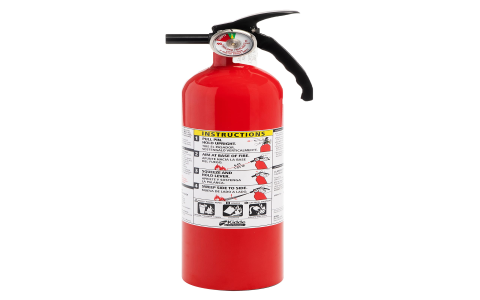General Motors Recalls 62,000 Trucks Over Fire Risk Concerns
General Motors Recalls 62,000 Pickups: What Truck Owners Need to Know
General Motors has issued a significant safety recall affecting approximately 62,000 of its popular full-size pickup trucks due to a potential fire hazard. The recall, announced by the National Highway Traffic Safety Administration (NHTSA), specifically targets certain 2023 model year Chevrolet Silverado HD and GMC Sierra HD trucks equipped with the 6.6-liter gasoline engine. The core issue involves a faulty battery positive voltage cable that may not be properly secured, which can lead to a short circuit and, in the worst cases, an engine compartment fire. For any truck owner, the news of a General Motors fire risk recall is alarming, and understanding the specifics is the first step to ensuring safety.
The Technical Breakdown: What’s Causing the Problem?
Let’s get under the hood. The problem isn’t with the engine’s performance but with a critical component in the electrical system. According to the official recall report (NHTSA Recall 23V-657), the battery positive voltage cable might contact the frame of the vehicle during driving. This contact can wear through the cable’s protective insulation over time.

Once the insulation is compromised, the exposed metal wire can create a short circuit against the truck’s frame. A short circuit generates intense heat very quickly. This heat can damage other engine components and, most dangerously, ignite flammable materials like oil or debris in the engine bay, leading to a fire. This risk is present even when the vehicle is turned off, as the battery cable remains live. This specific truck electrical system failure is what prompted GM to take swift action.
Which GM Truck Models Are Affected?
This recall is not for every Silverado or Sierra. It is a targeted action. If you own one of the following vehicles, you should pay close attention:
- 2023 Chevrolet Silverado 2500 HD
- 2023 Chevrolet Silverado 3500 HD
- 2023 GMC Sierra 2500 HD
- 2023 GMC Sierra 3500 HD
Important Note: This recall is specifically for trucks with the gasoline-powered 6.6L V8 engine (RPO L8T). It does not affect trucks with the Duramax turbo-diesel engine. The recall population was determined based on production dates, and GM estimates that about 1% of the recalled trucks actually have the defective condition.
What Should You Do If You Own a Recalled Truck?
Your safety is paramount. Here is a clear, step-by-step guide on what to do.
Step 1: Check Your VIN
The fastest way to see if your truck is involved is to check your Vehicle Identification Number (VIN). You can do this on the official NHTSA recalls website or on GM’s own recall lookup page. Have your 17-character VIN ready—you can find it on your driver’s side dashboard, visible through the windshield, or on your vehicle’s registration documents.
Step 2: Heed the Warning Signs

While waiting for official repair instructions, be vigilant. Key warning signs of this specific issue include:
- The smell of burning plastic or insulation coming from the engine bay.
- Smoke emanating from the engine compartment.
- Flickering or dimming headlights and interior lights.
- Any warning lights on the instrument cluster related to the electrical system.
If you experience any of these symptoms, park the vehicle in an open area away from structures, turn it off, and do not attempt to drive it. Contact your local GM dealer or roadside assistance immediately.
Step 3: The Repair Process
General Motors has instructed its dealers to inspect the routing of the positive battery cable. If it is found to be improperly routed and contacting the frame, technicians will replace the damaged cable and install a new retainer bracket free of charge. The repair is designed to be a permanent fix for the vehicle fire hazard.
Comparing GM’s Response to Other Automotive Recalls
How does this General Motors fire risk recall stack up against other similar automotive safety actions? Let’s look at a quick comparison to provide some context.
| Recall Issue | Vehicle Manufacturer | Vehicles Affected | Primary Risk | Recommended Action |
|---|---|---|---|---|
| Battery Cable Chafing | General Motors | ~62,000 | Engine Fire | Inspect & Replace Cable |
| Faulty Battery Seal | Ford (2022 Recall) | ~100,000 | Engine Compartment Fire | Replace Battery Junction Box |
| Brake Master Cylinder Leak | Ram (2021 Recall) | ~220,000 | Reduced Braking Performance | Inspect & Replace Component |
As automotive technology expert Dr. Emily Sanders, a certified automotive engineer with a focus on vehicle safety systems, notes, “Proactive recalls, while inconvenient, demonstrate a manufacturer’s commitment to safety. The key for consumers is to act promptly. A recall notice is not a suggestion; it’s a critical safety alert. The process for this GM truck recall is straightforward and addresses the root cause of the electrical fault.”
Your Rights and the Bigger Picture on Auto Safety
It’s important to know that as a vehicle owner, you have rights. Under U.S. law, the manufacturer is required to fix the problem at no cost to you. If you have already paid for a repair related to this specific issue before the recall was announced, you may be eligible for reimbursement from GM. Keep all your receipts and repair orders.

Recalls of this nature are a core part of the automotive industry’s safety ecosystem. They are the result of continuous monitoring by manufacturers and regulatory bodies like the NHTSA. This particular automotive safety recall for GM’s heavy-duty pickups highlights the importance of robust electrical system design and quality control, especially in workhorse vehicles that are often put under significant strain.
Frequently Asked Questions (FAQ)
Q: Is it safe to drive my 2023 Silverado HD if it’s part of the recall?
A: GM has not issued a “park it now” order for this recall. However, you should be extremely mindful of the warning signs mentioned above. For absolute peace of mind, it’s best to contact your dealer for an inspection as soon as possible and avoid long trips until the repair is complete.
Q: How long will the repair take?
A: The inspection and repair, if needed, are relatively simple. Most owners should expect the service to take a few hours at the dealership. It’s advisable to schedule an appointment in advance.
Q: What if my truck shows no symptoms?
A: You should still get it inspected. The problem could be developing even without immediate, obvious signs. The recall repair is preventative and aims to stop the issue before it can ever become a danger.

Q: Where can I find more official information?
A: The most authoritative sources are the National Highway Traffic Safety Administration (NHTSA) and General Motors’ official recall portal. You can also read GM’s official press release on their media newsroom.
Sources and Further Reading
- National Highway Traffic Safety Administration. (2023). Recall 23V-657 – General Motors, LLC. Retrieved from https://www.nhtsa.gov/recalls
- General Motors. (2023). Recall Information. Retrieved from https://my.gm.com/recalls







